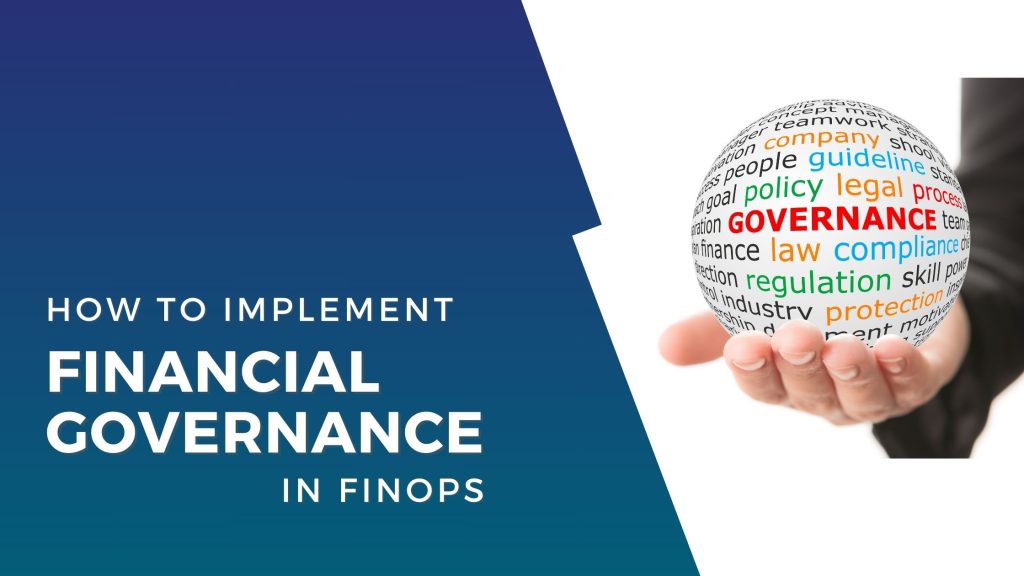Financial governance in FinOps (Financial Operations) is essential for organizations looking to manage cloud costs effectively while maximizing the value of their investments. This guide offers a comprehensive roadmap to implementing financial governance within FinOps, helping enterprises enhance their financial controls, ensure compliance, and optimize cloud cost management strategies.
TL;DR
Financial governance in FinOps provides a structured approach to managing cloud costs and ensuring maximum value from cloud investments. This guide covers key components like policy establishment, team creation, and technology utilization, while addressing common challenges and best practices.
Implementing these strategies can lead to significant cost savings, enhanced compliance, and better cloud resource utilization.
Financial governance in FinOps provides a structured approach to manage cloud costs effectively while ensuring that organizations derive maximum value from their investments.
This guide delves into the implementing financial governance in FinOps, offering a roadmap for enterprises aiming to enhance their financial controls, compliance, and overall cloud cost management strategies.
What is Financial Governance?
Financial governance refers to the set of policies, procedures, and practices that ensure the responsible management of an organization’s financial resources. In the context of FinOps, it involves overseeing cloud spending, ensuring compliance with budgetary constraints, and optimizing financial performance through strategic decision-making.
FinOps is a cultural practice that brings financial accountability to the variable spend model of cloud computing, enabling distributed teams to make informed decisions. It bridges the gap between finance, technology, and business teams, fostering collaboration to achieve optimal cloud cost management.
The Importance of Financial Governance in FinOps
Implementing robust financial governance in FinOps is crucial for several reasons:
- Cost Control: Ensures that cloud spending aligns with business budgets and prevents overspending.
- Accountability: Assigns financial responsibility to various stakeholders, promoting transparency.
- Optimization: Identifies opportunities for cost savings and efficient resource utilization.
- Compliance: Ensures adherence to regulatory and internal financial policies.
Key Components of Financial Governance in FinOps
Establishing Clear FinOps Policies
FinOps policies are the backbone of financial governance. These policies define the rules and guidelines for managing cloud expenses, including budgeting, forecasting, and cost allocation. Establishing clear policies ensures consistency and compliance across the organization.
Creating a FinOps Team
A dedicated FinOps team is essential for implementing and managing financial governance. This team typically comprises members from finance, IT, and business units, working together to monitor cloud costs, analyze spending patterns, and recommend cost-saving measures.
Implementing Cloud Governance
Cloud governance involves the policies and controls necessary to manage, monitor, and optimize cloud resources effectively. It includes setting up access controls, managing cloud service providers, and ensuring that cloud usage adheres to the organization’s standards and policies.
Setting Up Financial Controls
Effective financial controls are pivotal in enforcing financial governance. These controls include:
- Budgeting: Establishing and maintaining budgets for cloud expenditures.
- Forecasting: Predicting future cloud costs based on historical data and usage patterns.
- Cost Allocation: Assigning cloud costs to specific departments or projects to ensure accountability.
- Reporting: Generating regular reports on cloud spending to provide visibility and insights.
Leveraging Technology for Financial Governance
Several tools and platforms can assist in implementing financial governance in FinOps. These technologies offer automation, real-time monitoring, and advanced analytics, making it easier to manage cloud costs. Key tools include:
- Cloud Cost Management Platforms: Tools like AWS Cost Explorer, Azure Cost Management, and Google Cloud’s cost management tools help track and optimize cloud spending.
- FinOps Services: Solutions like Costwise.cloud offer comprehensive FinOps capabilities, including cost management, governance, and optimization.
Best Practices for Implementing Financial Governance in FinOps
Foster Collaboration
Effective financial governance in FinOps requires close collaboration between finance, IT, and business teams. Establish regular communication channels and collaborative workflows to ensure everyone is aligned on cost management goals and strategies.
Promote Financial Accountability
Assign clear financial responsibilities to stakeholders across the organization. Encourage a culture of financial accountability where teams understand the impact of their cloud usage on the overall budget and strive to optimize costs.
Continuous Monitoring and Optimization
Financial governance in FinOps is an ongoing process. Regularly monitor cloud spending, analyze usage patterns, and identify areas for cost optimization. Implement continuous improvement practices to refine policies and controls over time.
Educate and Train
Invest in training and education to ensure that all stakeholders understand the principles of financial governance in FinOps. Provide resources and tools to help teams manage their cloud costs effectively.
Challenges in Implementing Financial Governance in FinOps
Implementing financial governance in FinOps can be challenging. Common obstacles include:
- Complexity of Cloud Pricing: Cloud service pricing models can be intricate, making it difficult to predict and manage costs accurately.
- Resistance to Change: Teams may resist new policies and practices, especially if they perceive them as restrictive or burdensome.
- Lack of Expertise: Organizations may lack the necessary skills and knowledge to implement effective financial governance practices.
Overcoming Implementation Challenges
To overcome these challenges, consider the following strategies:
- Simplify Cloud Pricing Models: Work with cloud service providers to understand pricing models and simplify them for easier management.
- Change Management: Implement change management strategies to address resistance and encourage adoption of new practices.
- Training and Hiring: Invest in training existing staff and hiring experts in FinOps and cloud cost management.
Measuring the Success of Financial Governance in FinOps
Assessing the effectiveness of financial governance involves measuring key performance indicators (KPIs) such as:
- Budget Adherence: Tracking how well the organization adheres to cloud budgets.
- Cost Savings: Quantifying the cost savings achieved through optimization efforts.
- Resource Utilization: Measuring the efficiency of cloud resource usage.
- Compliance Rates: Monitoring adherence to financial policies and regulatory requirements.
Future Trends in Financial Governance for FinOps
As cloud adoption continues to grow, the importance of financial governance in FinOps will only increase. Future trends may include:
- AI and Machine Learning: Leveraging AI and machine learning to predict cloud costs and identify optimization opportunities.
- Advanced Analytics: Using advanced analytics to gain deeper insights into cloud spending patterns and trends.
- Integrated FinOps Solutions: Adoption of integrated FinOps platforms that combine cost management, governance, and optimization capabilities.
Conclusion
By establishing clear policies, fostering collaboration, leveraging technology, and continuously monitoring and optimizing cloud costs, businesses can achieve significant cost savings and operational efficiency.
Integrating clear policies, forming a dedicated FinOps team, and employing state-of-the-art tools and technologies, organizations can ensure greater accountability, cost control, and compliance with financial and regulatory standards. This approach not only secures financial health but also enhances the strategic utilization of cloud resources.
To navigate the complexities of cloud spending and maximize the value of your investments, partnering with experts like Costwise.cloud can be invaluable. Our team is dedicated to empowering your organization with tailored FinOps solutions that drive efficiency and growth. Reach out to us to start fortifying your financial governance in the cloud today.


